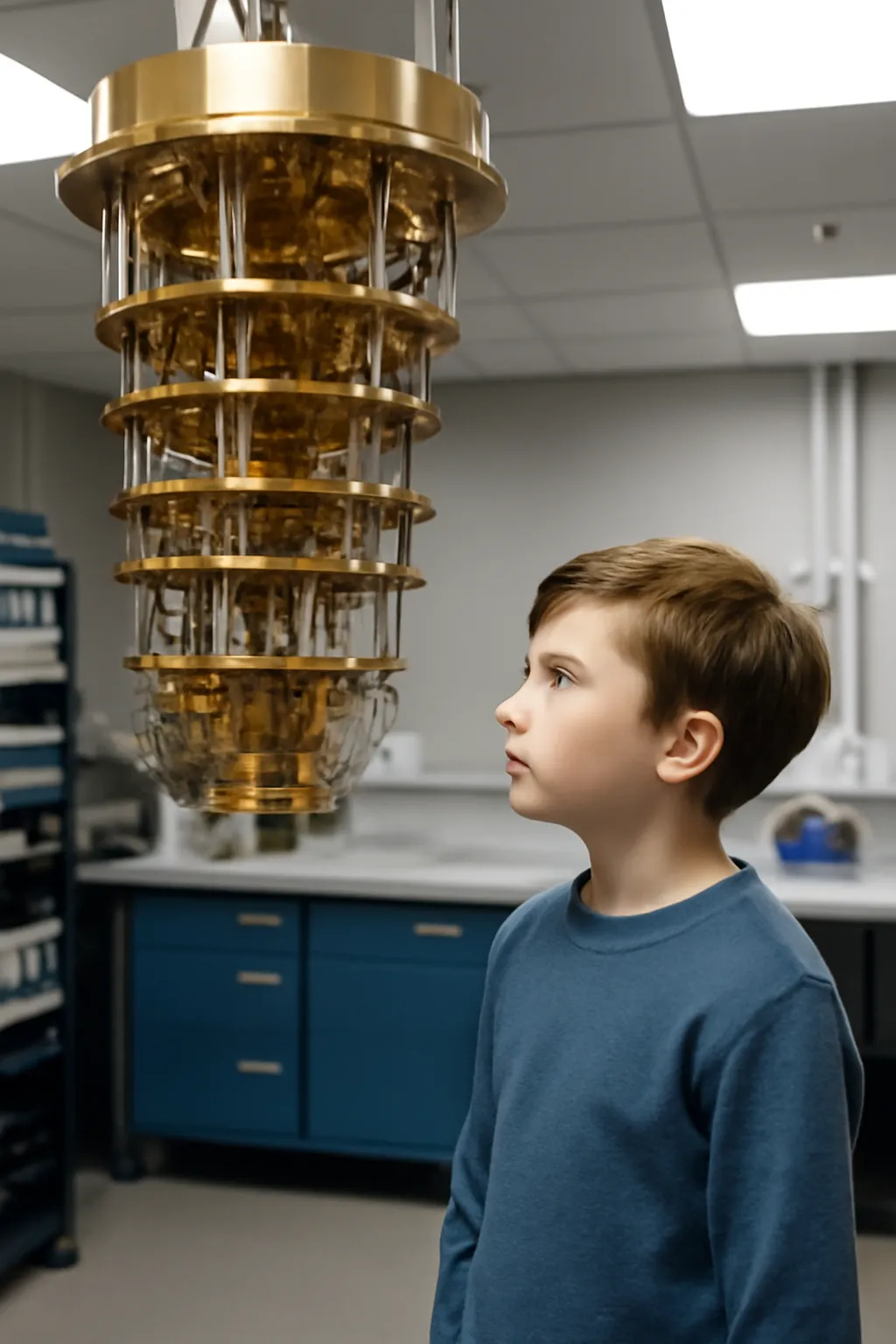Have you ever wondered how quantum computers work or what quantum mechanics really means? Let’s take a deep dive into these fascinating concepts with a fun approach, perfect for young students to understand!
Quantum mechanics is one of the most mind-boggling subjects in the world of science, often seeming impossible to understand for many, especially young learners. However, with the right tools and simplified explanations, even elementary school students can begin to appreciate the beauty and mystery of this branch of physics. Today, we’ll explore quantum mechanics with a fun twist: focusing on elementary quantum mechanics, the Pineman quantum computer, and how elementary school students can begin to grasp these advanced topics.
Elementary Quantum Mechanics
Quantum mechanics may sound like a subject reserved for advanced scientists, but its fundamental principles can be broken down in a way that even elementary school students can appreciate.
What is Quantum Mechanics?
At its core, quantum mechanics is the science that explains how the tiniest particles in the universe, such as atoms and subatomic particles, behave. Unlike things we see every day, like balls or cars, these tiny particles don’t follow the normal laws of physics. They behave in strange ways that can seem magical. For example, a particle can be in two places at the same time, or it can instantly affect another particle far away without touching it!
How Can We Explain This to Kids?
One way to explain quantum mechanics to elementary students is to use simple analogies. For instance, imagine a toy that can spin in multiple directions at once, and only when you look at it does it decide to spin in just one direction. This is similar to how quantum particles behave before we observe them, known as superposition. Another concept is entanglement, where two particles become so connected that when one moves, the other moves instantly, no matter how far apart they are!
Why is It Important?
Understanding quantum mechanics isn’t just for physicists. It’s shaping the future of technology, particularly with the development of quantum computers. These machines could solve problems in minutes that would take our current computers thousands of years!
Learn More About Quantum Mechanics
Quantum Mechanics: The Real World Connection
Now that we’ve explained the basics of quantum mechanics, let’s dive into how it applies to the real world, particularly in groundbreaking technologies like quantum computers.
What is a Quantum Computer?
A quantum computer is a machine that uses the principles of quantum mechanics to process information. Unlike regular computers, which use bits (which can be either 0 or 1), quantum computers use quantum bits, or qubits, that can be both 0 and 1 at the same time! This allows quantum computers to process massive amounts of data incredibly quickly.
The Magic Behind Quantum Computers
The magic behind quantum computers lies in their ability to harness quantum mechanics principles like superposition and entanglement. For example, a quantum computer could explore many different solutions to a problem at once, compared to a regular computer that would explore solutions one by one. This is why quantum computers have the potential to revolutionize fields such as cryptography, medicine, and artificial intelligence.
How Does This Relate to Elementary Students?
To make this concept more relatable to young students, you can compare quantum computers to a child solving a puzzle. Imagine they can try all the possible ways to fit the pieces together simultaneously, instead of one by one. The ability to try everything at once is what makes quantum computers so powerful and fast.
Explore Quantum Computers Further
The Pineman Quantum Computer: A Peek into the Future
The Pineman quantum computer represents the next generation of quantum computing. While traditional quantum computers are still in the early stages, the Pineman model promises to bring us closer to real-world applications for industries such as healthcare, energy, and more.
What Makes Pineman Different?
Pineman’s quantum computer is designed to address some of the challenges faced by earlier models, including stability and error correction. This cutting-edge system uses a unique method for controlling quantum bits, which allows it to operate more efficiently and with fewer errors. Imagine a team of scientists building the most stable, error-free spaceship ever created, that’s how the Pineman quantum computer is being developed.
How Can Elementary Students Relate?
While elementary students might not fully grasp the complexity of the Pineman model, they can appreciate the idea that scientists are working to build machines that could one day solve real-world problems. The Pineman computer, like a superhero, could potentially crack complex codes, design medicines, and simulate weather patterns.
Why Does This Matter for Kids?
Understanding technologies like Pineman is essential for the next generation of thinkers, doers, and problem solvers. With the rise of quantum technology, future generations will need to be ready to tackle problems that today’s computers can’t solve. Who knows, perhaps the young student learning about quantum mechanics today will be the one to design the next big quantum breakthrough!
Discover More About Pineman Quantum Computers
Conclusion
As we’ve seen, quantum mechanics, quantum computers, and the Pineman quantum computer may sound like topics for advanced students or scientists, but with the right explanations, these concepts are accessible to elementary school students. By introducing young learners to the wonders of quantum mechanics and technology, we’re giving them the tools to understand and perhaps even shape the future.
Remember, the journey to understanding quantum mechanics is like solving a complex puzzle – it may take time, but each step brings us closer to a future where we can harness the power of the quantum world.
“The important thing is not to stop questioning. Curiosity has its own reason for existing.” – Albert Einstein.






